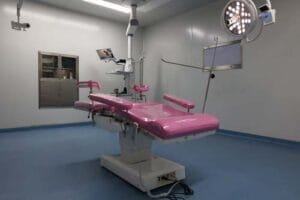Indirizzo
304 Il cardinale nord S.
Dorchester Center, MA 02124
Ore di lavoro
Dal lunedì al venerdì: 7:00 - 19:00
Fine settimana: 10:00 - 17:00
Il parto è un evento significativo nella vita di una donna e garantire un'esperienza di parto sicura e confortevole è una delle massime priorità nel campo dell'ostetricia. Al centro di questa esperienza c'è la scelta del tavolo da parto. Negli ultimi anni, i tavoli da parto elettrici hanno guadagnato popolarità per le loro caratteristiche avanzate, ma i tavoli da parto tradizionali hanno ancora il loro posto nelle strutture sanitarie. In questo articolo completo, confronteremo i pro e i contro dei tavoli da parto tradizionali ed elettrici, aiutandoti a prendere una decisione informata quando selezioni l'opzione più adatta per il tuo reparto maternità.
I tavoli da parto sono parte integrante dell'assistenza alla maternità, offrendo una piattaforma stabile per le future mamme durante il travaglio e il parto. La scelta tra tavoli tradizionali ed elettrici può avere un impatto significativo sull'esperienza del parto.
-300x300.png)
Uno dei principali vantaggi dei tavoli da parto tradizionali è la loro semplicità. Sono facili da usare e richiedono una manutenzione minima, il che li rende una scelta affidabile per i reparti maternità.
I tavoli da parto tradizionali sono generalmente più convenienti delle loro controparti elettriche. Per le strutture con risorse finanziarie limitate, questa convenienza può essere un fattore cruciale nel processo decisionale.
Molti operatori sanitari hanno familiarità con i tavoli da parto tradizionali, poiché sono in uso da molto tempo. Questa familiarità può portare a un utilizzo efficiente e confortevole durante le procedure di parto.
I tavoli da parto tradizionali offrono una regolazione limitata. Gli operatori sanitari devono posizionare e regolare manualmente il tavolo, il che può essere fisicamente impegnativo e meno preciso.
Il comfort delle future mamme è una considerazione critica. I tavoli tradizionali potrebbero essere meno comodi durante i periodi prolungati di travaglio e parto.
I tavoli tradizionali non si integrano con la moderna tecnologia medica e potrebbero richiedere il trasferimento dei pazienti per le procedure diagnostiche.
I tavoli da parto elettrici offrono regolazioni precise, consentendo agli operatori sanitari di personalizzare l'esperienza del parto per ogni paziente. Questa precisione può essere particolarmente preziosa durante il parto.
Le innovazioni nei materiali di ammortizzazione e nel design ergonomico rendono i tavoli elettrici più comodi per le future mamme, anche durante periodi di travaglio prolungati.
I tavoli elettrici sono dotati di funzioni di sicurezza avanzate, tra cui meccanismi di posizionamento sicuro e sistemi di backup di emergenza, che migliorano la sicurezza del paziente.
Alcuni tavoli elettrici si integrano perfettamente con la tecnologia di imaging, come gli ultrasuoni o i raggi X, consentendo diagnosi e procedure in tempo reale senza dover trasferire i pazienti.
I tavoli elettrici riducono al minimo lo sforzo fisico degli operatori sanitari, semplificano le procedure e facilitano rapidi adattamenti nei momenti critici, con conseguente miglioramento dell'efficienza e migliori risultati per i pazienti.

I tavoli da parto elettrici sono in genere più costosi dei tavoli tradizionali. L'investimento iniziale può essere una considerazione significativa per le strutture sanitarie.
I tavoli elettrici potrebbero richiedere più manutenzione e formazione per consentire agli operatori sanitari di operare in modo efficace. Una manutenzione regolare è essenziale per garantire il corretto funzionamento.
La scelta tra tavoli da parto tradizionali ed elettrici dipende da diversi fattori, tra cui il budget, il comfort del paziente, i requisiti di sicurezza e la familiarità degli operatori sanitari con l'attrezzatura.
È essenziale bilanciare i pro e i contro di entrambi i tipi di tavoli da parto. Alcune strutture potrebbero optare per una combinazione di tavoli tradizionali ed elettrici per soddisfare le diverse esigenze dei pazienti e i vincoli di budget.
Rispondiamo ad alcune domande comuni relative al confronto tra tavoli di distribuzione tradizionali ed elettrici.
Sì, i tavoli da parto tradizionali sono sicuri da usare se azionati da operatori sanitari qualificati. Tuttavia, potrebbero non avere alcune delle funzionalità di sicurezza avanzate presenti nei tavoli elettrici.
I tavoli da parto tradizionali presentano una regolazione limitata, il che può limitare la gamma di posizioni disponibili per il parto da parte delle future mamme.
I tavoli da parto elettrici sono adatti a molte strutture per la maternità, ma i loro costi e le loro esigenze di manutenzione potrebbero non essere adatti a tutte le strutture sanitarie.
Sì, gli operatori sanitari potrebbero aver bisogno di una formazione specializzata per utilizzare i tavoli da parto elettrici in modo efficace e sicuro.
Alcuni tavoli da parto tradizionali possono essere adattati con determinate caratteristiche moderne, anche se questi aggiornamenti potrebbero non garantire lo stesso livello di funzionalità dei tavoli elettrici realizzati appositamente.
La scelta tra tavoli da parto tradizionali ed elettrici nei reparti maternità dipende da una serie di fattori, tra cui budget, comfort del paziente, requisiti di sicurezza e preferenze degli operatori sanitari. Entrambi i tipi di tavoli hanno i loro pro e contro e la soluzione ideale spesso comporta la ricerca di un equilibrio che soddisfi le esigenze specifiche della struttura e dei suoi pazienti. Comprendere queste differenze è fondamentale per i professionisti sanitari incaricati di selezionare il tavolo da parto più adatto per il loro reparto maternità.
